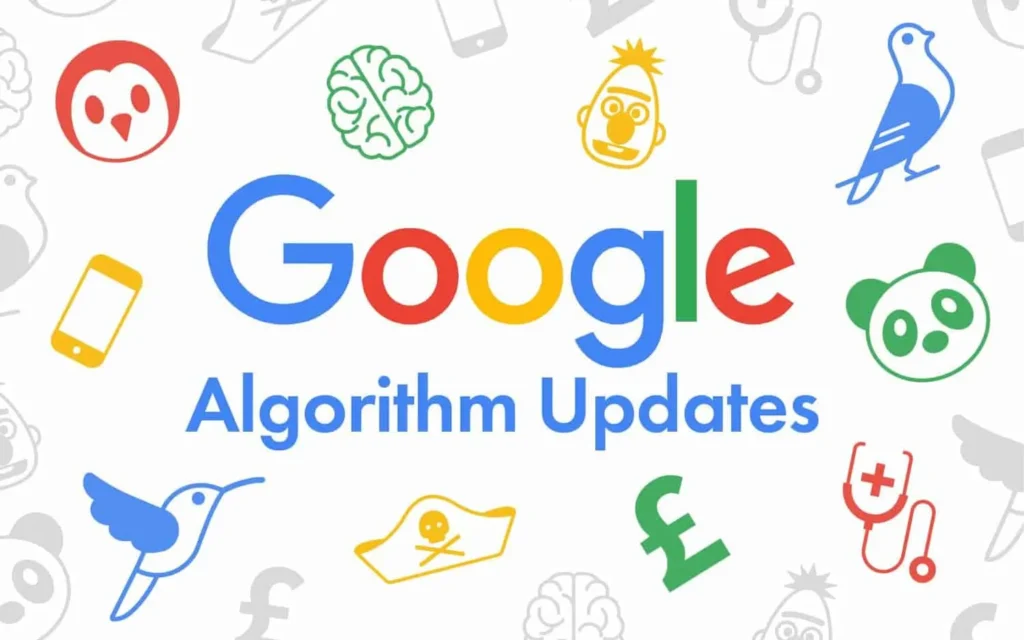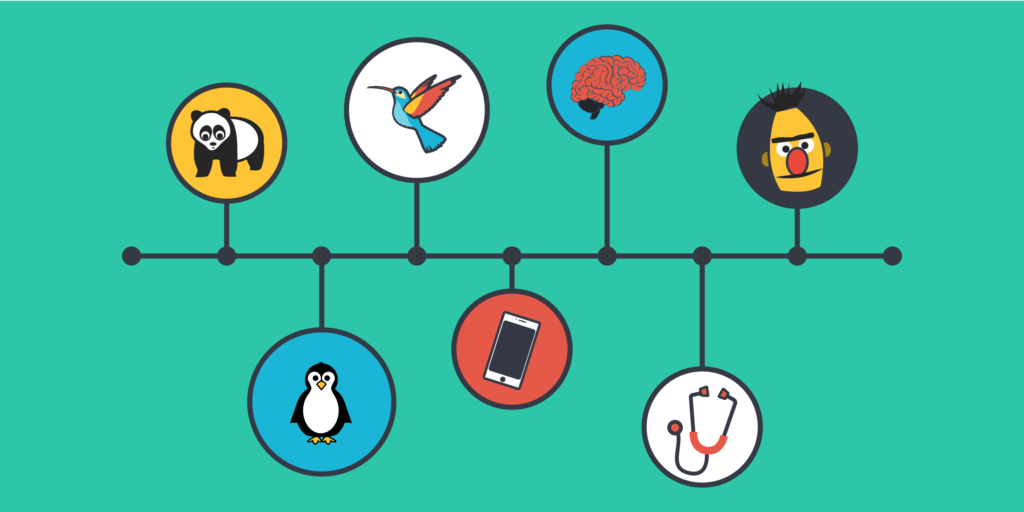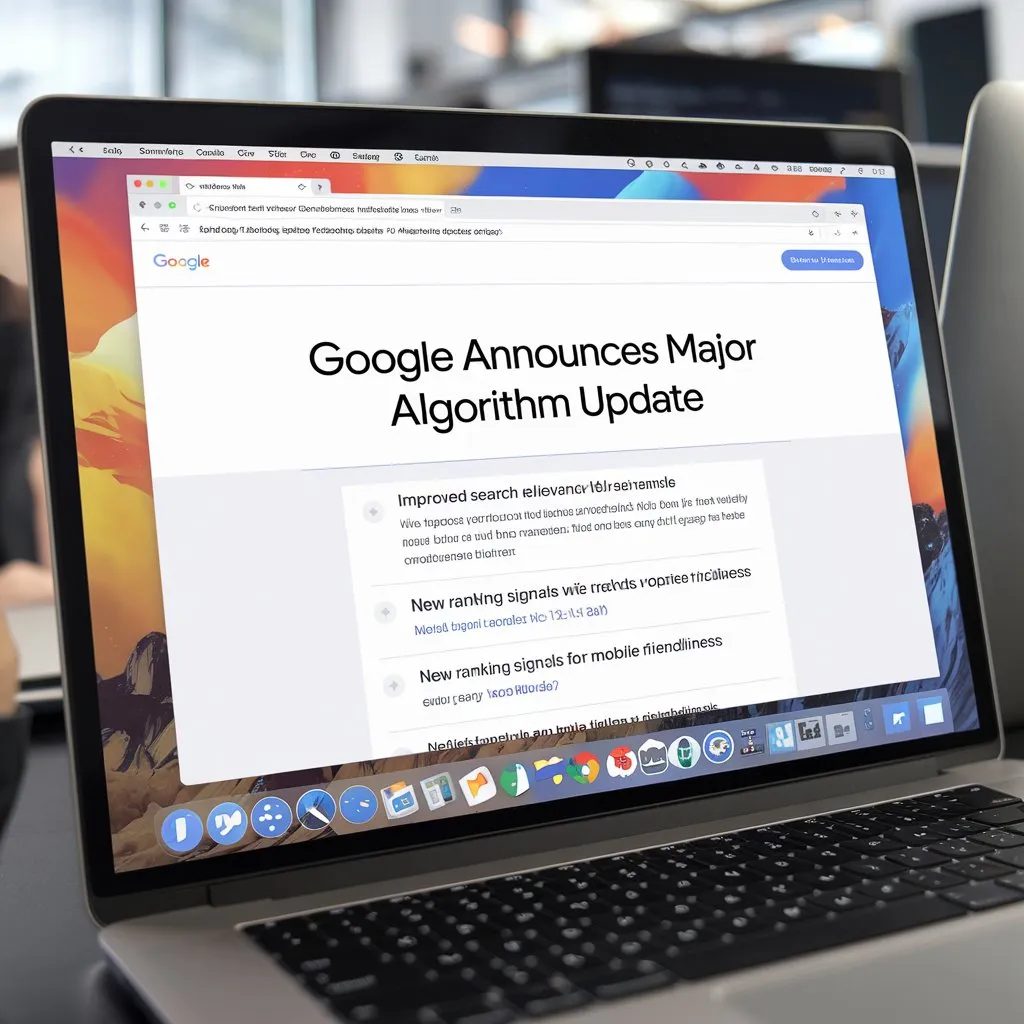
The curve of the digital world is constantly evolving. Success in the field also lies very heavily on staying a step ahead in the curve, as well as failure. And of all such factors that define the make and break of a good SEO strategy, two lie in the field of understanding the updates by the algorithm of Google.
Such updates can create dramatic changes in ranking on the search engine, traffic, and visibility on the internet. So, let’s dive into this blog post. I’m going to be discussing what Google algorithm updates are, why they are important, and how you can modify your SEO strategy to move ahead.
What Are Google Algorithm Updates?
Google’s algorithm is a complex system that would fetch data from its index and give it the best available results for your query instantaneously. The search engine uses algorithms together with hundreds of ranking factors so as to list web pages within the SERP, ranked in relevance.
It refreshes its algorithm very often for better search result quality. Changes may be minimum or full-scale changes that entirely change the ranking of sites. They intend to help users receive more relevant and useful content while penalizing low-quality or spammed sites as well.
Why do Google Algorithm Updates Matter?
Google algorithm updates matter because, directly or indirectly, they affect the appearance of your website when people are searching in Google. So if there is just one major update within the algorithm, it will make a significant swing on your rankings-up or down-and knowing this matters helps you, among others, keep or even elevate your current ranking.
Avoid Penalties: The first reason you should not ignore the updates is that ignoring it makes your site drop rankings or even get removed from search results entirely.
Improve User Experience: Most of the google algorithm updates center around user experience. This result is most likely going to give your visitor a better experience by getting your site aligned with the updates, which can amount to more engagement and conversions. It helps you stay competitive: The upgrades in the algorithms make you competitive in your business industry. You are at risk of falling back if your competitors upgrade while you still keep things as they were.
Important Google Algorithm Updates and their impact on SEO

Many of the most crucial algorithm updates Google has rolled out have shaken up the world of SEO. Here are some of the most important google algorithm updates and their
Panda (2011)
What It Targeted: Panda was to punish sites with low-quality content, thin content, and content farms. It
targeted rewarding sites with high-quality original content. It mostly affected sites’ ranking regarding websites with duplicated, thin or low-quality contents. However in this update seems that users do require original content of quality.
How to Modify: Quality Contents: Create the contents that carry value to audiences. Do not duplicate the
same contents. Also, ensure a good user experience for your site.
Penguin (2012)
What It Targeted: This update targeted websites that had engaged in manipulative link-building methods,
such as buying links or participating in schemes for links.
Impact on SEO: Websites that had unnatural backlink profiles had their rankings go down. It emphasized
the necessity of acquiring good, natural backlinks.
Impact on SEO: Websites that had unnatural backlink profiles had their rankings go down. It emphasized
the necessity of acquiring good, natural backlinks.
Hummingbird (2013)
What It Targeted: The Hummingbird update is the better attempt at getting an idea of what is behind the
search query, or the intent. This is not keyword-based; it is semantic search.
Impact on SEO: The update put keyword density back in light compared to just mere references of
keyword phrases to the context and meaning. This updated encouraged the creation of content aimed at
answering users’ questions.
How to Adapt: Optimize for semantic search. Focus on topics and user intent rather than keyword
optimization. Write in natural language and provide an exhaustive answer to the query posed by the user.
Mobilegeddon (2015)
What It Targeted: The Mobilegeddon update preferred more mobile-friendly websites during search from
a mobile device.
Impact on SEO: Unoptimized mobile sites lost rank in mobile searches. That was an update where the
importance of a responsive, mobile-friendly design was put forward.
How to Adapt: Ensure your website is mobile-friendly and responsive. Use Google’s Mobile-Friendly Test
to test the mobile usability of your site.
RankBrain (2015)
What It Targets: RankBrain is Google’s machine-learning-based algorithm to process search results and
eventually the intent of users.
Impact on SEO: RankBrain gave much more prominence to user-engagement metrics like CTR and
dwell time. It placed emphasis more on what context of query users will use.
How to Adapt: In this scenario, focus on such content that not only attracts a user but keeps him/her
longer on your website. Use all the relevant keywords naturally, offering valuable information pertinent to
user intent.
Medic (2018)
What it Targeted: The Medic update mainly targeted sites in the niche of health and wellness, especially
E-A-T (expertise, authoritativeness, trustworthiness).
SEO Impact: Sites that had little or no E-A-T lost massive amounts of ranking. It was easy to see how
one needed to establish expertise and authority in their niche.
Adapting : Work on the E-A-T of your site through well-authored and trustworthy content. Prove your
expertise, credentials, and show that your site is worthy of trust.
BERT (2019)
What It Targeted: The BERT was basically devised to concentrate much more on the words of any
contextual search query especially the lengthier ones and more conversational in nature.
Impact on SEO: That made Google a better understanding machine of the natural language and required
one to have the need to match the content in light of what actually users were trying to look up.
How to Adapt: Develop content that answers the questions of users in a more natural, conversational
tone. Use long-tail keywords and provide detailed answers to questions.
Core Web Vitals (2021)
What It Targeted: The Core Web Vitals update targeted user experience metrics, which include loading
speed, interactivity, and visual stability.
It has effects on the ranking of those badly scoring Core Web Vitals poor website, due to which brought
down their rankings. That by itself is noteworthy because it spells out the imperative of fast and seamless
user experience for the ultimate users.
Adaptation Prescription: Paying attention to enhance speed, interactivity, as well as visual stability of the
site. There are tools that can be made use of diagnostic purposes like Google Page Speed Insights.
How to Avoid Trouble Over Google Algorithm Update

Keeping ahead of Google algorithm updates is a proactive way to stay on top of SEO. Here are some
tips on how to stay up to date and adapt your strategy:
Stay Current with Industry News
Use industry blogs, forums, and news sites to stay updated with the latest SEO news and updates. Some
of the most widely followed sources are:
Google Webmaster Central Blog: Official news and updates by Google.
Search Engine Journal: A leading source of news regarding the latest trends and insights about SEO.
Moz Blog: The most authoritative blog on the best SEO trends and updates.
Search Engine Land: A detailed report on the news and updates that surround search engines.
Analyzing Your Analytics
Website analytics tracking for traffic or ranking changes. Tools include Google Analytics and Google
Search Console to track the performance of your sites and anomalies
Periodic SEO Audits
SEO audit on a periodic basis: Find problems that would affect your rank. An SEO audit must include the
following sub components:
Technical SEO: Scan crawl errors, site speed, broken links, etc.
On-page SEO: Check content, meta tags, internal linking, etc.
Quality Content
Content is still king in the world of SEO. Create unique quality content that adds value to your audience.
Ensure that your content is well-researched, informative, and serves the purpose of user intent.
Optimize for User Experience
User experience is a relevant SEO factor. Make your website fast, mobile friendly, and easy to navigate.
There are tools such as Google’s PageSpeed Insights and Mobile-Friendly Test that can find and
determine what issues to fix .
Have Good Backlinks
A successful SEO technique fundamentally differs with the presence of high-quality, organic backlinks.
This means creating relationships with quality niche sites and providing content others want to link to.
Be Flexible and Adaptable
These are the things to be sacrificed so that the always-changing world of SEO is followed. Prepare
yourself to update your strategy anytime based on the latest google algorithm updates and industry trends.
Conclusion
This understanding of Google algorithm updates and the impact they make on SEO will help you in maintaining and enhancing your website’s search engine ranking. By staying informed about these updates, you can adjust your SEO strategies accordingly, ensuring long-term success. Keep track of the latest changes, monitor your site’s performance, and modify your approach to stay ahead of the competition.
Remember, SEO is an ongoing process, not just a one-time fix. The key is to continually adapt to the evolving landscape of search engine algorithms. Whether it’s through optimizing content, improving user experience, or acquiring high-quality backlinks, every effort counts. In the world of ever-changing algorithms, being agile and responsive is essential to achieving consistent SEO success.
As a freelance digital marketer in Alappuzha, I, Harigovind J, focus on helping businesses navigate the complexities of SEO. My approach combines the latest insights into Google algorithm updates with effective, result-driven strategies. I specialize in content optimization, user experience enhancement, and link-building, ensuring that your website not only ranks well but also meets the needs of your audience. Let’s work together to stay ahead of the curve and drive sustainable online growth.